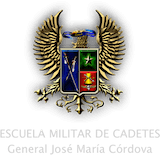Las Fuerzas Militares como instrumento de socialización del Estado
DOI:
https://doi.org/10.21830/19006586.517Palabras clave:
Ejército napoleónico; Ejército prusiano; Fuerzas Armadas de los Estados Unidos; Imperio romano; socializaciónResumen
La mayoría de los Estados continúan construyendo sus Fuerzas Armadas bajo la premisa de brindar seguridad a sus ciudadanos. Este proceso ha motivado discusiones tanto a favor como en contra, lo cual ha generado una serie considerable de desacuerdos entre partidos políticos, grupos étnicos y religiosos e, incluso, entre generaciones. Las Fuerzas Armadas están asociadas principalmente con el uso de la fuerza para obtener la paz, no obstante, el entrenamiento de futuros oficiales militares en el conocimiento y operación de medios letales crea una contradicción a los ojos de muchas sociedades. Este articulo intenta demostrar que, contrario a la imagen errada que ciertos sectores puedan tener, las Fuerzas Armadas contribuyen positivamente a la socialización del Estado. Además, pueden ser percibidas como una fuente de fortaleza moral y como base para el desarrollo de una nación en diferentes niveles.
Descargas
Referencias bibliográficas
Atkinson, C. (2014). Military Soft Power: Public Diplomacy through Military Educational Exchanges. Maryland: Rowman & Littlefield.
Beard, M. (2016). SPQR: A history of Ancient Rome. London: Profile Books.
Beattie, K. (1998). The Scar That Binds: American Culture and the Vietnam War. New York; London: NYU Press.
Beckett, I. (2001). Modern Insurgencies and Counter-insurgencies: Guerrillas and their Opponents since 1750. New York: Routledge.
Bessel, R., Guyatt, N., & Rendall, J. (Eds.). (2010). War, Empire and Slavery, 1770-1830. London: Palgrave Macmillan.
Boot, M. (2013). Invisible Armies: An Epic History of Guerrilla Warfare from Ancient Times to the Present. New York: Liveright.
Bungay, S. (2011). The Art of Action: How Leaders Close the Gaps between Plans, Actions, and Results. London: Nicholas Brealey Publishing.
Burk, J. (2002). Theories of democratic civil-military relations. Armed Forces & Society, 29(1), 7-29.
Campbell, B. (2002). Warfare and society in imperial Rome, C. 31 BC-AD 280. London: Routledge.
Campbell, C., & Auerswald, D. (Eds.). (2015). Congress and Civil-Military Relations. Washington: Georgetown University Press.
Cohen, R. (2015). Demystifying the Citizen Soldier. Santa Monica: RAND Corporation.
Cooper, L., Caddick, N., Godier, L., Cooper, A., & Fossey, M. (2018). Transition from the military into civilian life: An exploration of cultural competence. Armed Forces & Society, 44(1), 156-177.
Craig, G. (1964). The Politics of the Prussian Army 1640-1945. Oxford: Oxford University Press.
Fenby, J. (2015). The History of Modern France: From the Revolution to the War on Terror. Croydon: Simon and Schuster.
Forrest, A., Hagemann K., & Rendall, J. (Eds.). (2009). Soldiers, Citizens and Civilians: Experiences and Perceptions of the Revolutionary and Napoleonic Wars, 1790-1820. London: Palgrave Macmillan.
Gat, A. (2013). Nations: The long history and deep roots of political ethnicity and nationalism. Cambridge: Cambridge University Press.
Gat, A. (2001). A history of military thought: From the Enlightenment to the Cold War. Oxford: Oxford University Press.
Greenwood, F., & Smith, G. (1866). The Prussian Army. The Cornhill Magazine, 14(83), 548-563.
Godfrey, R., Lilley, S., & Brewis, J. (2012). Biceps, bitches and borgs: Reading Jarhead’s representation of the construction of the (masculine) military body. Organization Studies, 33(4), 541-562.
Herspring, D. (2009). Civil-Military Relations in the United States and Russia: An Alternative Approach. Armed Forces & Society, 35(4), 667-687.
Hewitson, M. (2013). Princes’ Wars, Wars of the People, or Total War? Mass Armies and the Question of a Military Revolution in Germany, 1792-1815. War in History, 20(4), 452-490.
Huntington, S. (1985). The soldier and the State: The theory and politics of civil-military relations. Harvard: Harvard University Press.
International Institute for Strategic Studies. (2015). The Military Balance. London: Routledge.
Jomini, A. H. (1854). Summary of the Art of War: Or, a New Analytical Compend of the Principal Combinations of Strategy, of Grand Tactics and of Military Policy. New York: GP Putnam’s Sons.
Kennedy, G., Kennedy G. C., & Neilson, K. (Eds.). (2002). Military education: Past, present, and future. Santa Barbara: Greenwood Publishing Group.
Kretchik, W. (2011). US Army Doctrine: US Army Doctrine. From the American Revolution to the War on Terror. Lawrence: University Press of Kansas.
Mainz, V. (2016). Days of Glory? Imaging Military Recruitment and the French Revolution. London: Palgrave Macmillan.
Miron, M. (2019a). On Irregular Wars, Insurgencies and How to Counter Them: Enemy- and Populationcentric Approaches in Comparative Perspective. Revista Científica General José María Córdova, 17(27), 457-480. http://dx.doi.org/10.21830/19006586.497
Miron, M. (2019b). Counterinsurgency Operations in the 21st Century: Insights from the United States Army Experiences in Iraq. Bogota D.C.: Sello Editorial ESMIC.
Morgan, M. (2006). American empire and the American military. Armed Forces & Society, 32(2), 202-218.
Neill-Harris, K., Resnick, S., Wilson-John, W., Miller-Stevens, K., Vandecar-Burdin, T., & Morris, J. (2016). Assessing partnerships between the military and civilian agencies to meet transitioning service members’ needs. Armed Forces & Society, 42(3)2016): 585-604.
Nielsen, S., & Snider, D. (Eds.). (2009). American civil-military relations: The soldier and the state in a new era. Baltimore: The John Hopkins University Press.
Olsen, J. A., & Van Creveld, M. (Eds.). (2011). The evolution of operational art: From Napoleon to the present. Oxford: Oxford University Press.
Opello, W., & Rosow, S. (2004). The nation-state and global order: A historical introduction to contemporary politics. Boulder: Lynne Rienner.
Parker, G. (Ed.). (2005). The Cambridge illustrated history of warfare: The triumph of the West. Cambridge: Cambridge University Press.
Phillips, T. (Ed.). (1985). Roots of strategy: The 5 greatest military classics of all time. Vol. 1. The Military institutions of the Romans/by Vegetius. Mechanicsburg: Stackpole Books.
Reveron, D. (2016). Exporting security: International engagement, security cooperation, and the changing face of the US military. Washington: Georgetown University Press.
Rich, J., & Shipley, G. (Eds.). (1993). War and society in the Roman world. London: Routledge.
Rothenberg, G. E. (1989). Soldiers and the Revolution: The French Army, Society, and the State, 1788–99. The Historical Journal, 32(4), 981-995.
Scheidel, W. (Ed.). (2012). The Cambridge companion to the Roman economy. Cambridge: Cambridge University Press.
Smith, D. (2016). The State of the Middle East Atlas. Oxford: New Internationalist.
Sondhaus, L. (2010). Strategic culture and ways of war. London: Routledge.
Southern, P. (2007). The Roman army: A social and institutional history. New York: Oxford University Press
Strachan, H. (1977). The politics of the British Army. Oxford: Clarendon Press.
Thornton, R. (2000). Cultural Barriers to Organisational Unlearning: The US Army, the ‘Zero‐Defects’ Culture and Operations in the post‐Cold War World. Small Wars & Insurgencies, 11(3), 139-159. https://doi.org/10.1080/09592310008423292
Thornton, R. (2007). Asymmetric Warfare: Threat and Response in the Twenty-First Century. Cambridge, UK: Polity Press.
US Army Training and Doctrine Command. (2014). Pamphlet 525-3-1 The US Army Operating Concept: Win in a Complex World. Tradoc: Fort Eustis Virginia.
Van Creveld, M., & Keegan, J. (2005). The art of War: war and military thought. New York: Harper.
Walter, D. Roon, the Prussian Landwehr, and the Reorganization of 1859-1860. War in History, 16(3), 269-297. https://doi.org/10.1177/0968344509104193
Weigley, R. (1977). The American way of war: A history of United States military strategy and policy. Bloomington: Indiana University Press.
Wilson, I. (2013). Thinking beyond war: Civil-military relations and why America fails to win the peace. New York: Palgrave Macmillan.
Wilson, J., DiIulio J., Bose, M., & Levendusky, M. (2016). American government: Institutions and policies. Boston: Cengage Learning.
Descargas
Publicado
Cómo citar
Número
Sección
| Estadísticas de artículo | |
|---|---|
| Vistas de resúmenes | |
| Vistas de PDF | |
| Descargas de PDF | |
| Vistas de HTML | |
| Otras vistas | |

























